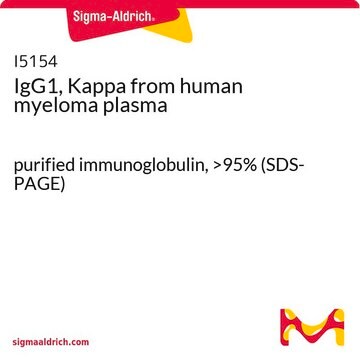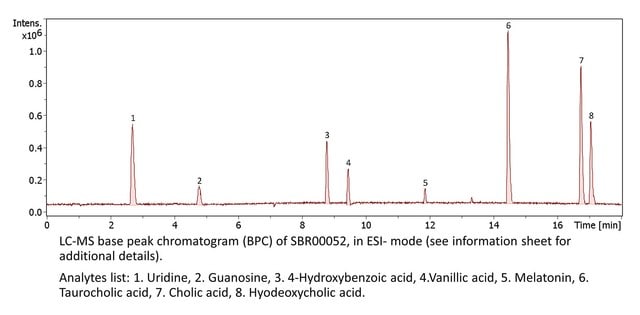M1398
IgG1, Kappa from murine myeloma
clone MOPC 31C, ascites fluid, lyophilized powder
Synonym(s):
Mouse IgG1-κ
Sign Into View Organizational & Contract Pricing
All Photos(1)
About This Item
Recommended Products
biological source
mouse
Quality Level
conjugate
unconjugated
antibody form
ascites fluid
clone
MOPC 31C, monoclonal
form
lyophilized powder
storage temp.
2-8°C
target post-translational modification
unmodified
Looking for similar products? Visit Product Comparison Guide
Related Categories
General description
The MOPC 31C tumor line that produces mouse IgG1,k is a mineral oil-induced plasmacytoma originated and carried subcutaneously in BALB/c mice. Immunoglobulin G (IgG) belongs to the immunoglobulin family and is a widely expressed serum antibody. An immunoglobulin has two heavy chains and two light chains connected by a disulfide bond. It mainly helps in immune defense. It is a glycoprotein. IgG is a major class of immunoglobulin. Mouse consists of five immunoglobulin classes- IgM, IgG, IgA, IgD and IgE. Mouse IgG is further divided into five classes- IgG1, IgG2a, IgG2b and IgG3.
Application
IgG1, Kappa from murine myeloma has been used in immunohistochemistry.
Biochem/physiol Actions
IgG antibody subtype is the most abundant of serum immunoglobulins of the immune system. It is secreted by B cells and is found in blood and extracellular fluids. It provides protection from infections caused by bacteria, fungi and viruses. Maternal IgG is transferred to fetus through the placenta that is vital for immune defense of the neonate against infections.
Immunoglobulin G (IgG) participates in hypersensitivity type II and type III reactions. IgG2a has cytotropic properties and IgG2 molecules have the ability to activate the complement system. IgG helps in opsonization, complement fixation and antibody dependent cell mediated cytotoxicity.
Reconstitution
Reconstitute with 1 ml deionized water.
Disclaimer
Unless otherwise stated in our catalog or other company documentation accompanying the product(s), our products are intended for research use only and are not to be used for any other purpose, which includes but is not limited to, unauthorized commercial uses, in vitro diagnostic uses, ex vivo or in vivo therapeutic uses or any type of consumption or application to humans or animals.
Storage Class Code
11 - Combustible Solids
WGK
WGK 3
Flash Point(F)
Not applicable
Flash Point(C)
Not applicable
Personal Protective Equipment
dust mask type N95 (US), Eyeshields, Gloves
Certificates of Analysis (COA)
Search for Certificates of Analysis (COA) by entering the products Lot/Batch Number. Lot and Batch Numbers can be found on a product’s label following the words ‘Lot’ or ‘Batch’.
Already Own This Product?
Find documentation for the products that you have recently purchased in the Document Library.
Time course of growth factor staining in a rabbit model of traumatic tractional retinal detachment
Westra I, et al.
Graefe'S Archive For Clinical and Experimental Ophthalmology = Albrecht Von Graefes Archiv Fur Klinische Und Experimentelle Ophthalmologie, 233(9), 573-581 (1995)
The Laboratory Rat (1998)
Molecular Genetics of Immunoglobulin (1987)
The Immunoglobulins: Structure and Function (1998)
Flow-cytometric analysis of platelet-membrane glycoprotein expression and platelet activation.
Alison H Goodall et al.
Methods in molecular biology (Clifton, N.J.), 272, 225-253 (2004-07-01)
Our team of scientists has experience in all areas of research including Life Science, Material Science, Chemical Synthesis, Chromatography, Analytical and many others.
Contact Technical Service







